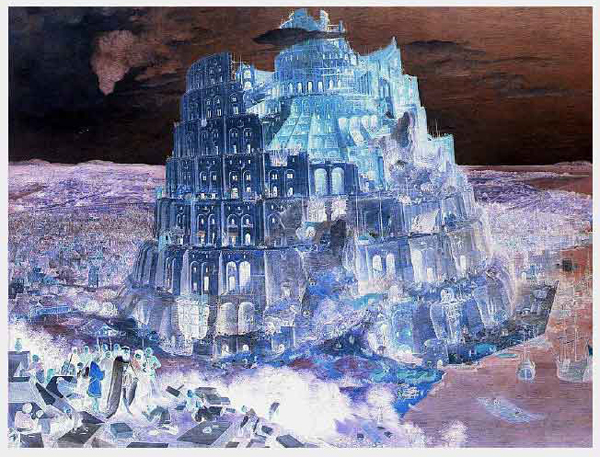
home | links | compass

Tower of Babel. 1928.
by M.C. Escher
LINKS
References
von Ahn on Human
Computation
AI Conferences
Animating Time Data
Climate Collab
Darwin papers
EO Wilson Foundation
Gapminder
Geo-tagger's World Atlas
Gordon Lab
Innovation Networks
IRIDIA
Kelly - Hivemind
Kirschner Lab
London Open Street Map
Los Alamos – Symbiotic
Intelligence
Microbes–Mind Forum
MIT Center for
Collective Intelligence
Planet Innovation
Recommender Systems
SIGCHI
SIGEVO
SIGGRAPH
Turner Fieldwork
Vinge on Singularity
Wall Street Journal
Tower of Babel |
Why use the Tower of Babel as a portal to resources on collaborative intelligence? The Tower of Babel is used to present opposite, conflicting views, highlighting a misunderstood principle of collaborative intelligence — collaborative autonomy.
A Tower, built of stones, where every stone is unique, supports individuality, as in the principle of collaborative autonomy, which underpins collaborative intelligence. The Tower of Babel would then symbolize how collaborative autonomy (of individuals) makes possible collaborative intelligence, given a situation architecture that provides a self-organizing context. Built of bricks and mortar, it represented conformity, sleep, witlessness, binding everyone together into a forced consensus in which each individual was locked into the role s/he must play. Situation architecture addresses the key factor of contextualization. Meaning is interpreted in context and may differ, not only with different interpreters, but in different contexts. Evolutionary theorists, such as Ernst Mayr, emphasize the importance of the individual; without evolutionary differences evolution could not occur. |
|
Biologists have observed that even ant colonies don't lock all workers into standard roles. In human society, far more complex than ant colonies, a collection of effective “I’s” (individuals) is a prerequisite for collaborative intelligence. Collaborative intelligence shifts from the anonymity of collective intelligence to acknowledged identity, as when individuals participate in social networks. Harnessing the collaborative intelligence of diverse participants requires better systems for semantic analysis, with capacity to cluster and link related concepts, visualise work-in-progress, tag user profiles, and credit individual contributions. A knowledge processing system that enables users to share information and opinions can process qualitative input. Diverse, generally non-anonymous, credited, time-stamped input into an interactive system is tagged, preserving a database of the unique knowledge, expertise, and priorities of participants, while offering diverse methods of clustering, searching, and accessing their input. This website surveys theoretical work relevant to developing a theory of collaborative intelligence and coherent body of knowledge on this subject, research spanning cognitive science, and computing; Earth systems science and evolutionary theory; and design science and game theory. To define the principles of collaborative intelligence requires identifying intersections with theory in cognate fields. |
|
Collaborative autonomy is the principle underpinning collaborative intelligence through which individual contributors maintain their roles and priorities as they apply their unique skills and leadership autonomy in a problem-solving process. Individuals are not homogenized, as in consensus-driven processes, nor equalized through quantitative data processing, as in collective intelligence. Consensus is not required. Problem resolution is achieved through systematic convergence toward coherent results. |
|
|
|
![]()
BOOKS
![]()
Ehrlich - Humanity
on a Tightrope
![]()
Kelly – What
Technology Wants
![]()
Axelrod – Evolution
of Cooperation
![]()
Axelrod – Complexity
of Cooperation
![]()
Hansen, Schneiderman,
Smith – Analyzing Social
Networks - Node XL
![]()
Surowieki_
Wisdom of Crowds
![]()
J Fodor & M P
What Darwin Got Wrong
